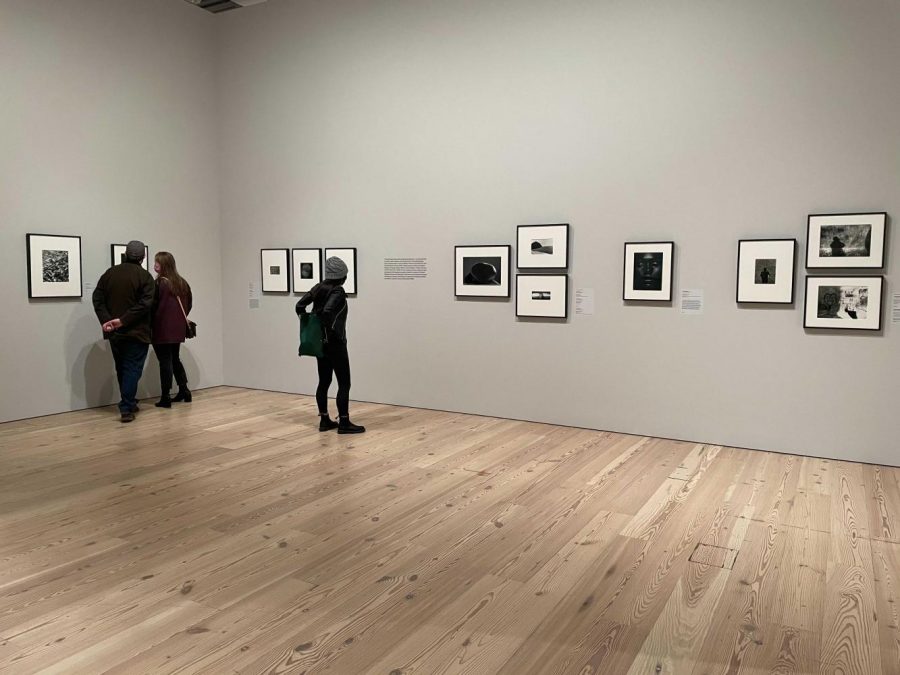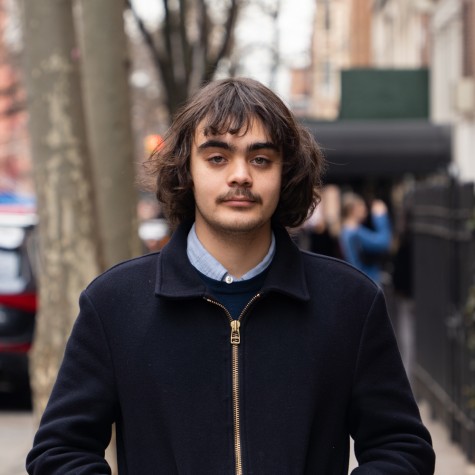A photograph featuring 14 Black photographers stands at the center of the Whitney Museum of American Art’s 8th floor. Some of them are laughing, others stand stoically, but they all pose with dignity. These 14 figures comprised the Kamoinge Workshop, a Black photography collective formed in 1963 to take photographs of and for the Black community. They were the subject of the Whitney Museum’s latest retrospective: “Working Together.”
“Kamoinge” means “a group of people acting together” in the language of the Kikuyu people of Kenya. The Kamoinge Workshop’s oeuvre reflected the principles of self-determination and self-sufficiency championed during the Civil Rights Movement. Their photographs of Civil Rights activists like Malcolm X, celebrated Black artists such as Sun Ra, Mahalia Jackson and Miles Davis, and people living in countries that had recently gained independence from colonial holdings, like the neighboring nation of Cuba, reflect a social awakening that’s as pressing today as it was 60 years ago. With “Working Together,” the Whitney Museum honors the work of each and every one of the Kamoinge Workshop’s early members by bringing together 140 photographs that highlight their contributions to American Art.
“They weren’t Civil Rights photographers,” Curatorial Assistant Mia Matthias said in a Whitney Q&A. “They were doing Civil Rights.”
The Black Arts Movement represented politically motivated Black artists working throughout the 1960s that posited artistic experimentation as a way of reappraising the history of the Black community in America. The Kamoinge Workshop embraced this tradition, providing alternative forms of representing politically active members of the Black community that challenged the mainstream media’s depictions of the Civil Rights Movement. For example, Adger Cowan’s “Malcolm Speaks” chooses to frame Malcolm X as a dot in a sea of activists, challenging the common portraits of his isolated face that positioned him as a singular radical figure in the eyes of the world.
“This exhibition covers the first two decades of the collective, which is 1963 to 1982, and this is a period that coincides with the Black Arts Movement and the Civil Rights Movement,” said Carrie Springer, Senior Curatorial Assistant at The Whitney. “The name [Kamoinge] reflects the ideals of the collective as well as a global perspective the members had.”
“Working Together” comes at a time of cultural reimagining given the pandemic’s ubiquity when it comes to reframing every facet of human existence. The pandemic lent itself to increased efforts on behalf of social movements like the Black Lives Matter Movement that protested police brutality following the death of George Floyd at the hands of a white police officer.
This past year’s many revolutions have made a wide range of institutions reevaluate their inclusion of Black Artists. Since the summer of 2020, Criterion Channel lowered their paywall so people could access more films by Black directors, Vogue highlighted Aurora James’ efforts to get more brands to pledge 15% of their shelf space to Black-owned businesses and the Whitney Museum unveiled “Working Together.”
The legacy of the Kamoinge Workshop was obscured for far too long. The Whitney Museum’s “Working Together” brought it into the light. The beauty of the 140 photographs collected by Springer and Matthias rebel against the lionization of white artists by presenting a new way of capturing and interpreting Black lives through photography.
As Kamoinge Workshop member Louis Draper put it, “We speak of our lives as only we can.”
A version of this article appeared in the Monday, March 29, 2021 e-print edition. Email Nicolas Pedrero-Setzer at [email protected].
























































































































































